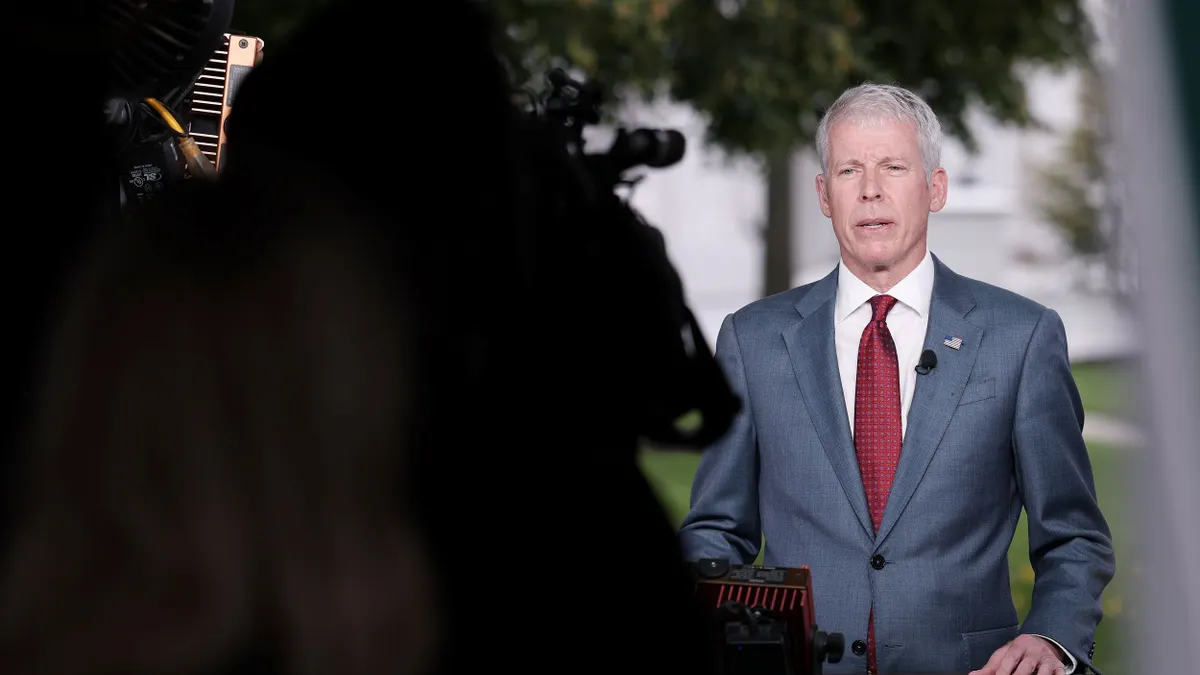The following is a contributed article by Liza Reed, research manager for electricity transmission, and Andrew Xu, transmission intern, at the Niskanen Center.
This summer, blazing 100-degree-plus Fahrenheit temperatures pushed energy demands to record heights, prompting warnings to residents in Texas and southern California to prepare for rolling blackouts. This was the latest wake-up call that extreme weather events, exacerbated by climate change, are becoming more common. It also served as a reminder that Texas has been here before; the southern state’s grid cannot handle extreme heat or cold. Texas could keep the lights on if it had more capacity to bring power in from neighboring regions, fostered by a strong and interconnected electricity grid.
As extreme weather events keep on coming, Congress can and should shore up energy resilience by establishing a clear standard for inter-regional transmission support.
There are many ways to segment the U.S. electricity grid into a different number of regions, but a convenient one is 12 — 11 separate planning regions as defined by the Federal Energy Regulatory Commission and the region in Texas served by the Electric Reliability Council of Texas. These 12 regions, each covering one or more states, are responsible for planning transmission within their footprint to ensure a reliable flow of electricity. Existing interconnections between these regions allow electricity from one area to flow back and forth to another.
These interconnections are certainly valuable. If a grid operator is suddenly unable to meet regional power demands, it can still make up the difference by importing electricity from another region through interregional transmission lines. Without these high-capacity interstate and interregional lines, energy can get “trapped” in a region that is generating more power than it is consuming, resulting in negative prices right next door to high prices.
Still, interchange capability varies widely. According to our estimates, the amount of energy that can be exchanged — known as transfer capacity — varies significantly across different regions. PJM, which operates over many mid-Atlantic states, boasts a transfer capacity of 24 gigawatts of electricity between its neighbors, which could support 15% of its highest load. However, these connections are unevenly spread over its 3 neighbors. Its connection to the west with the Midcontinent Independent System Operator dominates at 16.5 GW, while its neighbor to the north, the New York Independent System Operator, contributes only 2 GW. Meanwhile, ERCOT in Texas can only bring in a paltry 0.8 GW, about 1% of its peak load, even though it has 3 neighboring regions. New York, Florida, and New England grid operators are similarly limited, making them vulnerable to extreme events.
In recent years this transfer capacity variability has proven costly and problematic to grid reliability. Perhaps the most prominent example is 2021’s winter storm Uri. Frigid temperatures swept across the Midwest, but only the areas served by ERCOT suffered extensive blackouts, leaving 4.5 million Texan homes and businesses without power. At least 210 Texans died, and the storm is estimated to have cost Texans from $80 billion to $130 billion. In contrast, states to the north and east of Texas had stronger grid ties and could share power as the storm raged across the region, keeping the lights on and costs down. One report concluded, "An additional 1 GW transmission tie to the Southeast could have saved Texas consumers nearly $75 million."
Regions with more transfer capacity are more resilient than those with less, and a grid with more transfer capacity can serve consumers better in good weather and bad. Numerous independent reports have concluded that increased interregional transmission would significantly strengthen the grid and save billions of dollars annually. Yet, planning and building these connections is very difficult in existing regulatory conditions without external pressure from Congress. The question now is how to incentivize interregional transmission development to strengthen energy security and avoid repeating the painful experience of winter storm Uri.
Members of the Federal Energy Regulatory Commission have flirted with implementing a minimum transfer capacity standard. It has come up in formal comments, during commission meetings, at two different technical conferences, and was an agenda topic at a recent task force meeting. While there appears to be broad agreement it would be a good idea, it has yet to make it into any rulemakings. This issue is ripe for Congress to solve in a far more timely manner.
Congressional action would ensure that a minimum transfer capacity standard benefits consumers in Texas, an outcome that is not guaranteed by independent action by FERC. ERCOT limits its electrical connection to its neighboring grids specifically to limit the authority FERC has to regulate it. Decision makers in Texas focused on winterizing the generation supply in Texas, in response to the 2021 winter event, but continue to avoid transmission solutions. Transmission capacity would provide more options for the grid operators in future extreme events, but may change ERCOT’s regulatory landscape. A Congressional proposal for interregional transfer could require ERCOT compliance while still allowing its semi-independence.
Congress demonstrated its ability to quickly respond to transmission crises by establishing FERC’s role in electricity reliability after the 2003 Northeast Blackout. Today, several regions urgently need more transfer capacity, and this will only become more pressing as energy demands grow and extreme weather proliferates. In the wake of recent transmission failures that have cost lives and gouged consumers, Congress should respond by mandating a minimum interregional transfer capacity. Although narrow, it is a clear and decisive action to ensure that the American electricity grid is prepared for the challenges of today and the future.






















